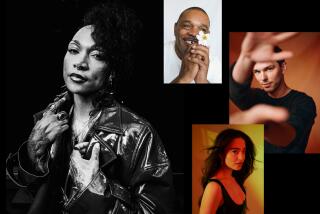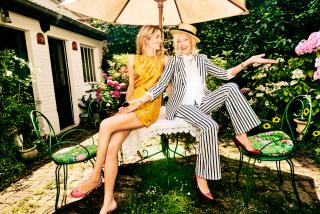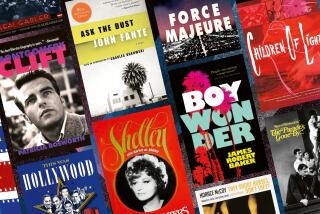Audrey, unguarded
- Share via
Long before paparazzi trolled Hollywood in tinted-windowed SUVs, photographers and movie stars shared a more cordial relationship. In 1953, photographer Bob Willoughby landed the plum assignment of shooting Audrey Hepburn for Paramount Studios, just before her turn in “Roman Holiday” made her a major star. A spate of assignments linking the two ensued, and gradually the actress and the lens man cultivated a relationship beyond soundstage walls.
The unguarded images that resulted from their friendship are the subject of Life magazine’s latest installment in its Great Photographers series. “Remembering Audrey,” which is essentially a magazine with a thick cover, offers a candid glimpse into the life of one of America’s most revered style icons, whose famously gamin look remains a touchstone in the fashion and beauty industries to this day. Many of the book’s photographs have never been published or had only been published outside the U.S. Not every shot feels particularly special, but Willoughby captured tense-looking moments in her happy-then-stormy marriage to director Mel Ferrer, her elation over the birth of her first son, Sean, and her affinity for animals (her Yorkshire terrier, Mr. Famous, is at her side in most of the private photos).
For “My Fair Lady” fans, there’s a series of previously unpublished photos taken on the set, showing a pensive Hepburn being directed by taskmaster director George Cukor, and the smiling actress getting dirty in the makeup chair to play the ragamuffin role of Eliza Doolittle.
But the most striking of Willoughby’s images were taken off the clock: Hepburn napping at home with a fawn (yes, a fawn) in her lap that animal wranglers urged her to take home from the set of “Green Mansions”; the Ferrer and Willoughby clans at Sean’s first birthday party; and Hepburn laughing with one of her later loves, actor Albert Finney, whom she starred with in the 1967 film “Two for the Road.”
While the brief text tells Hepburn’s life story in broad strokes, the detailed captions are fascinating and full of play-by-play recollections from Willoughby. (On the intense and difficult set of “The Children’s Hour,” Hepburn “would just disappear,” Willoughby says. “And when I went looking for her, I would find her hidden away in an unlit part of the set.”)
In the end, “Remembering Audrey” is a kind of visual diary of the actress at the peak of her career -- something today’s celebrity photographers would never have enough access to emulate.
--


